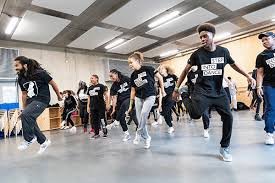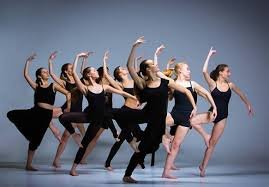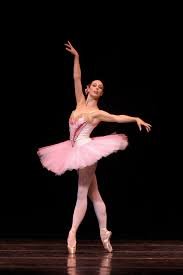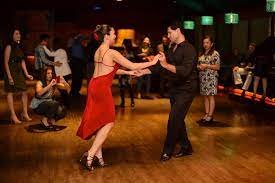Dance therapy is a form of expressive therapy that utilizes movement and dance as a way of promoting emotional, mental, and physical wellbeing. It is an evidence-based approach that combines the creative arts with psychological therapy. Dance therapy is often used as a complementary treatment for a range of mental health disorders, including anxiety, depression, trauma, and eating disorders.
History of Dance Therapy

The origins of dance therapy can be traced back to the early 20th century, when dance was first used in mental health treatment. In the 1940s and 1950s, modern dance pioneers such as Martha Graham and Doris Humphrey began to experiment with dance as a way of exploring the emotional and psychological aspects of movement. The first formal dance therapy training program was established in the 1960s by Marian Chace, a dance teacher who worked with psychiatric patients.
Since then, dance therapy has gained recognition as a valid therapeutic approach, and the field has grown considerably. Today, dance therapy is practiced around the world, and there are numerous training programs and professional organizations dedicated to its study and promotion.
How Does Dance Therapy Work?
Dance therapy works by integrating movement, music, and verbal processing to help individuals explore and express their emotions, thoughts, and experiences. The process begins with an assessment, in which the therapist evaluates the client’s physical abilities, emotional state, and treatment goals.
The therapist then works with the client to design a treatment plan that utilizes dance and movement to address their specific needs. Sessions may include improvisational dance, structured movement exercises, and group dance activities, all of which are tailored to the client’s abilities and interests.
As the client moves, the therapist observes their body language and provides feedback to help them become more aware of their physical and emotional responses. This feedback may be verbal or nonverbal, and it may focus on specific movements or on the overall quality of the client’s movement.
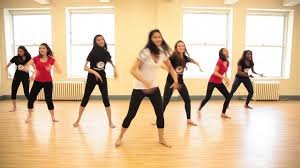
Throughout the session, the therapist also encourages the client to talk about their experiences, thoughts, and feelings. This verbal processing helps to deepen the client’s understanding of themselves and their emotions, and it allows the therapist to provide guidance and support.
Benefits of Dance Therapy
Dance therapy has been shown to offer numerous benefits for individuals of all ages and backgrounds. Some of the key benefits include:
- Improved emotional wellbeing: Dance therapy can help individuals explore and express their emotions in a safe and supportive environment. This can lead to a greater sense of emotional awareness and regulation.
- Increased physical health: Dance therapy involves physical movement, which can help improve flexibility, strength, and coordination. It can also help reduce pain and stiffness in individuals with chronic pain conditions.
- Enhanced cognitive functioning: Dance therapy has been shown to improve cognitive functioning, including memory, attention, and problem-solving skills. This may be particularly beneficial for individuals with neurological disorders such as Parkinson’s disease.
- Reduced anxiety and depression: Dance therapy has been shown to reduce symptoms of anxiety and depression in individuals with mental health disorders. This may be due to the combination of physical movement and emotional expression.
- Improved social skills: Dance therapy often involves group activities, which can help individuals develop social skills such as communication, cooperation, and empathy.
- Increased self-esteem and confidence: Dance therapy can help individuals develop a greater sense of self-esteem and confidence as they become more comfortable with their bodies and their emotions.
Best Dance Therapy Course:
Dance therapy is a rapidly growing field, and there are a variety of courses and training programs available for individuals interested in pursuing a career in this area. The best dance therapy courses provide students with a comprehensive understanding of the theory and practice of dance therapy, as well as the skills and knowledge needed to work effectively with clients in a variety of settings.
In this article, we will discuss some of the key elements to consider when choosing a dance therapy course, and highlight some of the top programs available.
Key Elements to Consider When Choosing a Dance Therapy Course
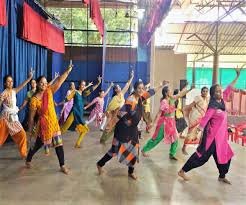
- Accreditation: When choosing a dance therapy course, it is important to look for programs that are accredited by professional organizations such as the American Dance Therapy Association (ADTA) or the International Association for Dance Medicine & Science (IADMS). Accreditation ensures that the program meets certain standards of quality and rigor, and that graduates are eligible for certification and licensure in their field.
- Faculty: The quality and experience of the faculty is another important consideration when choosing a dance therapy course. Look for programs that are taught by experienced dance therapists, psychologists, and other mental health professionals with expertise in the field.
- Curriculum: The curriculum of the dance therapy course should cover a broad range of topics, including the history and theory of dance therapy, movement and dance techniques, clinical assessment and diagnosis, and the ethical and legal issues involved in the practice of dance therapy.
- Hands-on Experience: A strong dance therapy course should include opportunities for students to gain hands-on experience working with clients in a variety of settings, such as hospitals, schools, and mental health clinics. Look for programs that offer internships, practicums, and other experiential learning opportunities.
- Flexibility: Finally, consider the flexibility of the dance therapy course. Some programs may be designed for full-time students, while others may be geared towards working professionals. Look for programs that offer a variety of scheduling options, including online and part-time options.

Top Dance Therapy Courses
- Lesley University – Expressive Therapies (MA) Dance/Movement Therapy Specialization: Lesley University is a highly regarded institution that offers a Master of Arts in Expressive Therapies with a specialization in Dance/Movement Therapy. This program is accredited by the ADTA and prepares students for certification as dance/movement therapists. The curriculum includes courses in dance/movement therapy theory and practice, research methods, and clinical assessment and diagnosis. Students also have the opportunity to gain hands-on experience working with clients in a variety of settings.
- Columbia College Chicago – Dance/Movement Therapy and Counseling (MA): Columbia College Chicago offers a Master of Arts in Dance/Movement Therapy and Counseling that is designed to prepare students for licensure as professional counselors and certification as dance/movement therapists. This program is accredited by the ADTA and the Council for Accreditation of Counseling and Related Educational Programs (CACREP). The curriculum includes courses in dance/movement therapy theory and practice, counseling skills, and clinical assessment and diagnosis. Students also have the opportunity to gain hands-on experience working with clients in a variety of settings.
- Antioch University New England – Dance/Movement Therapy and Counseling (MA): Antioch University New England offers a Master of Arts in Dance/Movement Therapy and Counseling that is accredited by the ADTA and designed to prepare students for licensure as professional counselors and certification as dance/movement therapists. The curriculum includes courses in dance/movement therapy theory and practice, counseling skills, and clinical assessment and diagnosis. Students also have the opportunity to gain hands-on experience working with clients in a variety of settings.


